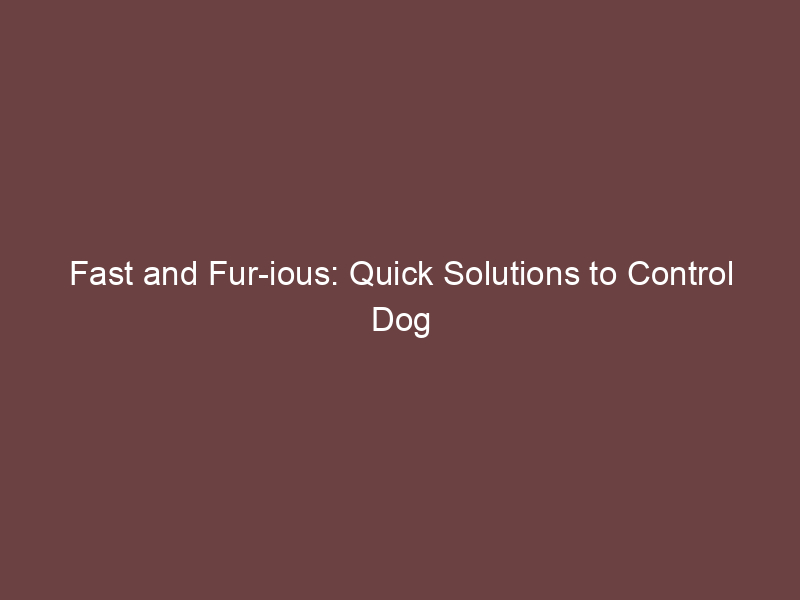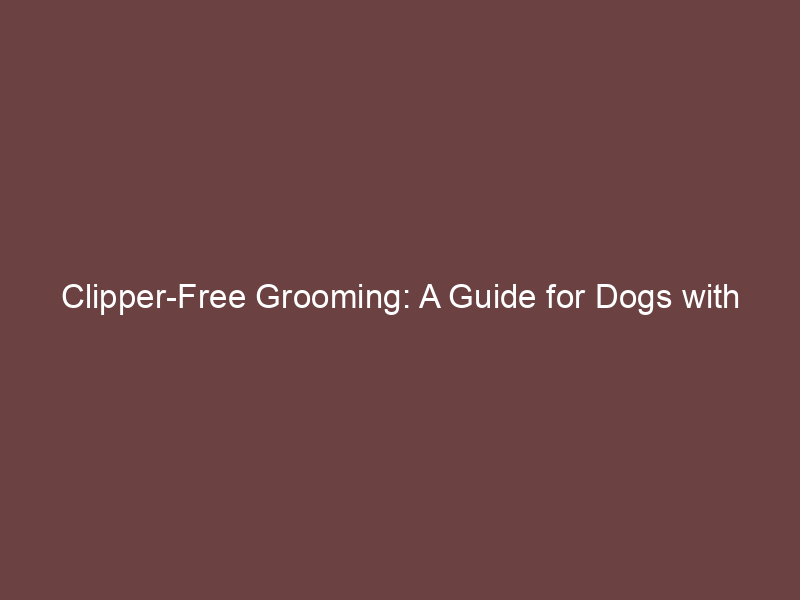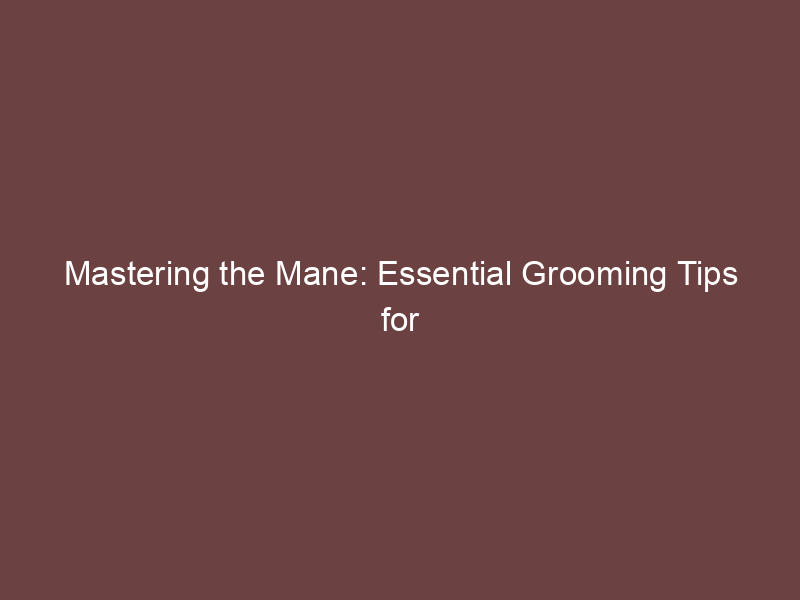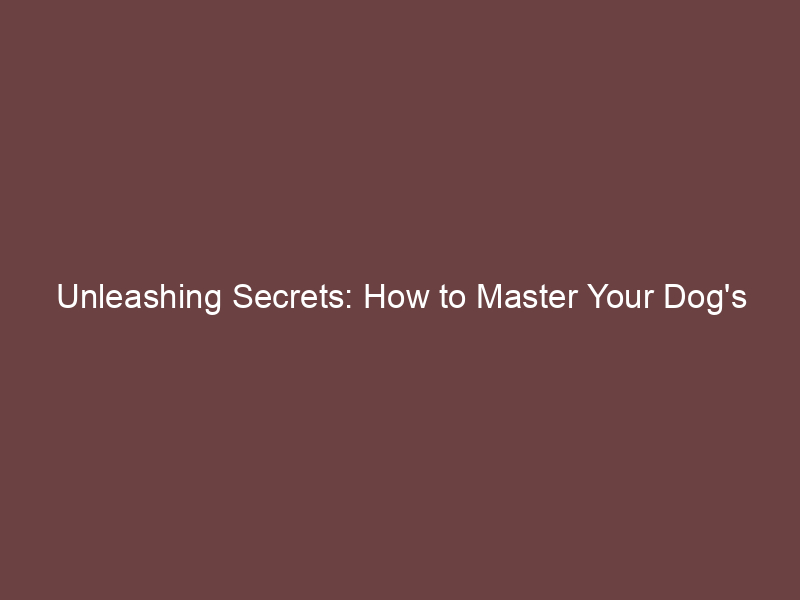
Introduction: The Fur-ious Problem of Dog Shedding
If you’re a dog owner, you’re probably no stranger to the fur-ious problem of dog shedding. It’s a natural process, but sometimes it can seem like your furry friend is losing more hair than usual. In this blog post, we’ll explore the causes of dog shedding and provide some helpful tips to manage it.
- Understanding the natural process of dog shedding
- Causes of excessive dog shedding
Dog shedding is a normal part of a dog’s life. Dogs shed their hair to make room for new hair growth. This process is influenced by various factors, including the breed of the dog, the dog’s health, and the changing seasons. For instance, many dogs shed more during spring and fall as they prepare for the new weather conditions.
While shedding is a natural process, excessive shedding can be a sign of underlying health issues. Some common causes of excessive dog shedding include poor nutrition, stress, allergies, parasites, or certain medical conditions. It’s important to monitor your dog’s shedding and seek veterinary advice if you notice a sudden increase in hair loss.
In the following sections, we’ll delve into quick fixes for pet shedding, how proper nutrition can reduce dog shedding, and various dog hair loss remedies. We’ll also provide tips for dog fur shedding control, maintenance, and prevention. So, stay tuned and embrace the fur-ious nature of your furry friend!
Quick Fixes for Pet Shedding
While shedding is a natural process for our furry friends, it can sometimes become a problem for pet owners. However, there are quick fixes to help manage this issue. Let’s explore some effective doggy shedding treatments.
Doggy Shedding Treatments
There are two main treatments that can help reduce your dog’s shedding. These are:
- Professional Grooming Services
- Specialized Shedding Treatments
Professional grooming is not just about making your dog look good. It’s also about maintaining their health. Groomers have the right tools and knowledge to remove excess hair, untangle mats, and keep your pet’s coat in top condition. Regular grooming sessions can significantly reduce the amount of hair your dog sheds.
Specialized shedding treatments are products designed to reduce excessive shedding. These can include shampoos, conditioners, and sprays that help to strengthen the hair follicle and reduce hair loss. They are often used in conjunction with regular grooming for the best results.
Remember, every dog is unique. What works for one might not work for another. It’s always best to consult with a professional to determine the best course of action for your pet’s specific needs.
Home Remedies for Dog Shedding
If you’re looking for simple, cost-effective ways to manage your dog’s shedding at home, you’re in the right place. Here are two of the most effective home remedies for dog shedding:
- Regular Brushing
- Homemade Treatments
One of the most straightforward and effective ways to manage dog shedding is regular brushing. Brushing your dog’s fur not only helps to remove loose hairs before they end up on your furniture, but it also helps to distribute your dog’s natural oils, keeping their coat healthy and shiny.
It’s recommended to brush your dog at least once a week, but for heavy shedders, daily brushing might be necessary. The type of brush you use will depend on your dog’s breed and coat type. For instance, a slicker brush is great for dogs with long, thick fur, while a bristle brush works well for dogs with short, smooth coats.
There are also several homemade treatments that can help reduce shedding. One popular option is an oatmeal bath. Oatmeal has natural soothing properties that can help keep your dog’s skin healthy, reducing the amount of hair they shed.
To make an oatmeal bath, simply grind up a cup of oatmeal in a blender until it’s a fine powder. Then, mix it with warm water in your dog’s bath. Let your dog soak for about 10 minutes before rinsing thoroughly. Just remember, while these treatments can help, they’re not a substitute for regular veterinary care.
Remember, shedding is a natural process for dogs, and while we can’t stop it completely, we can manage it effectively with these home remedies. Regular brushing and homemade treatments like oatmeal baths can go a long way in keeping your home fur-free and your dog comfortable and healthy.
How to Reduce Dog Shedding with Proper Nutrition
One of the most effective ways to reduce dog shedding is by providing your furry friend with proper nutrition. Just like humans, dogs need a balanced diet to maintain their health and vitality. Let’s delve into the importance of a balanced diet and how certain supplements can help reduce shedding.
- Importance of a Balanced Diet
A balanced diet is crucial for your dog’s overall health. It ensures that your dog gets all the necessary nutrients it needs to thrive. These nutrients include proteins, carbohydrates, fats, vitamins, and minerals. Each of these plays a vital role in your dog’s health.
Proteins, for instance, are essential for the growth and repair of body tissues. Carbohydrates provide energy, while fats are necessary for brain development, especially in puppies. Vitamins and minerals, on the other hand, boost the immune system and help prevent diseases.
When your dog’s diet is balanced, it can lead to a healthier coat and less shedding. A diet rich in omega-3 and omega-6 fatty acids, for example, can improve your dog’s skin health and reduce excessive shedding.
- Supplements to Reduce Shedding
While a balanced diet is key, sometimes your dog may need a little extra help to reduce shedding. This is where supplements come in. Certain supplements can improve your dog’s coat health and reduce shedding.
One such supplement is fish oil. Fish oil is rich in omega-3 fatty acids, which can help improve your dog’s skin health and reduce shedding. Another beneficial supplement is biotin. Biotin, also known as vitamin B7, can help improve your dog’s coat health and reduce shedding.
Remember, it’s always best to consult with your vet before starting any new supplement regimen for your dog. They can guide you on the right dosage and ensure the supplement is safe for your dog.
In conclusion, proper nutrition plays a vital role in reducing dog shedding. By providing your dog with a balanced diet and the right supplements, you can help reduce shedding and keep your dog’s coat healthy and shiny.
Dog Hair Loss Remedies
When it comes to your furry friend’s health, hair loss can be a significant concern. It’s not just about aesthetics; excessive shedding can be a sign of underlying health issues. In this section, we will discuss some medical treatments that can help manage and reduce dog hair loss.
Medical Treatments
Medical treatments for dog hair loss are varied and depend on the underlying cause. However, before we delve into the common treatments, it’s important to know when to consult a vet.
- When to consult a vet
- Common medical treatments for excessive shedding
- Topical Treatments: These include medicated shampoos and creams that can help soothe the skin and reduce shedding.
- Oral Medications: If your dog’s hair loss is due to hormonal imbalances or other internal issues, your vet may prescribe oral medications.
- Special Diets: Sometimes, a change in diet can help reduce shedding. Your vet may recommend a diet high in omega-3 and omega-6 fatty acids to promote healthier skin and coat.
If your dog’s shedding seems excessive or if you notice bald patches, it’s time to consult a vet. Other signs that warrant a vet visit include changes in your dog’s behavior, such as scratching or licking excessively, or if your dog seems uncomfortable. Remember, early detection can make a significant difference in your dog’s health and comfort.
Medical treatments for excessive shedding often aim to address the underlying cause. Here are a few common treatments:
Remember, every dog is unique, and what works for one may not work for another. Always consult with your vet before starting any new treatment. In the next section, we will explore some natural remedies for dog hair loss.
Natural Remedies
Aside from medical treatments, there are also natural remedies that can help reduce your dog’s excessive shedding. These remedies are often safer and gentler on your dog’s system. Let’s explore some of these natural options.
-
Herbal Treatments
Herbs are nature’s gift to us and our pets. Certain herbs, like flaxseed and olive oil, are known to improve a dog’s coat and reduce shedding. They are rich in Omega-3 fatty acids, which are essential for healthy skin and fur.
Flaxseed can be sprinkled on your dog’s food, while olive oil can be mixed in. Start with a small amount and gradually increase it. Remember to consult your vet before starting any new treatment.
Herb Benefits Flaxseed Rich in Omega-3 fatty acids, improves coat health, reduces shedding Olive Oil Improves skin health, reduces shedding, adds shine to coat -
Homeopathic Remedies
Homeopathy is a system of natural medicine that treats the whole body, not just the symptoms. For dogs with excessive shedding, homeopathic remedies like Sulphur and Lycopodium can be beneficial. They are known to improve skin health and reduce hair loss.
These remedies are usually given in pellet form and can be mixed in with your dog’s food. As with any treatment, it’s best to consult with a vet or a homeopathic practitioner before starting.
Homeopathic Remedy Benefits Sulphur Improves skin health, reduces hair loss Lycopodium Helps with digestive issues, improves skin health
Remember, every dog is unique and what works for one may not work for another. It’s always best to consult with a professional before starting any new treatment. Natural remedies can be a great way to improve your dog’s overall health and reduce shedding, but they should be used as part of a comprehensive care plan.
Dog Fur Shedding Control: Maintenance and Prevention
Shedding is a natural process for dogs, but sometimes it can become a problem for both the pet and the owner. However, with proper maintenance and prevention, you can control your dog’s shedding and keep your home fur-free. Here are some effective tips to prevent dog shedding.
Tips to Prevent Dog Shedding
- Regular grooming
- Proper nutrition
- Regular check-ups
Grooming your dog regularly is one of the most effective ways to control shedding. Brushing your dog’s fur not only removes loose hairs but also distributes natural oils throughout the coat, keeping it healthy and shiny. It’s recommended to brush your dog at least once a week, but for breeds that shed heavily, daily brushing might be necessary.
What your dog eats can significantly affect its fur’s health and shedding levels. A diet rich in essential fatty acids, proteins, and vitamins can help reduce excessive shedding. Foods with Omega-3 and Omega-6 fatty acids, such as fish and flaxseed oil, can improve your dog’s skin and coat health, reducing shedding. Always consult with your vet before making any significant changes to your dog’s diet.
Regular vet check-ups are crucial in preventing excessive shedding. Some diseases and health issues can cause your dog to shed more than usual. Regular vet visits can help detect these issues early and treat them before they lead to excessive shedding. It’s recommended to take your dog for a check-up at least once a year.
Remember, while these tips can help control your dog’s shedding, it’s impossible to stop it completely. Shedding is a natural process for dogs and a sign of a healthy coat. However, with proper care and maintenance, you can significantly reduce the amount of fur you find around your home.
Dog Shedding Prevention Tips
When it comes to controlling dog shedding, there are a couple of key factors to consider. These include the breed of your dog and understanding their shedding cycle. Let’s delve into these two crucial aspects:
- Choosing the Right Breed
- Understanding Your Dog’s Shedding Cycle
Not all dog breeds shed the same. Some dogs, like Poodles and Bichon Frises, are known for their hypoallergenic coats that shed very little. On the other hand, breeds like Labrador Retrievers and German Shepherds are notorious for shedding a lot. Therefore, if you’re planning to get a new dog and shedding is a concern, you might want to consider a breed that is known for minimal shedding.
Just like humans, dogs also have hair growth cycles. This cycle includes growth, rest, and shedding phases. Most dogs have a shedding season in the spring and fall, but this can vary depending on the breed and the individual dog’s health. Understanding your dog’s shedding cycle can help you anticipate heavy shedding periods and take necessary measures to control it.
Remember, while shedding is a natural process for dogs, excessive shedding can be a sign of underlying health issues. Always consult with your vet if you notice any sudden changes in your dog’s shedding patterns.
Conclusion: Embracing the Fur-ious Nature of Your Furry Friend
As we reach the end of our journey, it’s important to remember that shedding is a natural process for dogs. It’s a part of their life cycle and a sign of their health. Rather than seeing it as a problem, we should embrace it as a part of our furry friend’s nature.
- Accepting shedding as a natural process
- Commitment to your dog’s health and happiness
Shedding is not a sign of a problem, but rather a natural part of a dog’s life. It’s how they renew their fur and maintain their skin health. Just like humans lose old and damaged hair, dogs shed their fur. It’s a process that we should understand and accept.
Our dogs depend on us for their health and happiness. A well-groomed, well-fed, and well-loved dog is a happy dog. And a happy dog is less likely to shed excessively. Regular grooming, a balanced diet, and plenty of love and attention can go a long way in controlling shedding. Remember, your commitment to your dog’s health and happiness is the key to a fur-free home.
So, let’s embrace the fur-ious nature of our furry friends. Let’s understand and accept shedding as a natural process. Let’s commit to their health and happiness. After all, a little bit of fur is a small price to pay for the unconditional love and companionship that our dogs give us every day.
| Key Takeaways |
|---|
| Shedding is a natural process for dogs. |
| Commitment to your dog’s health and happiness can control excessive shedding. |
| Embrace the fur-ious nature of your furry friend. |






